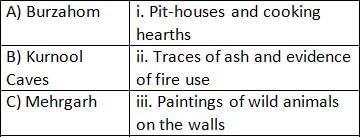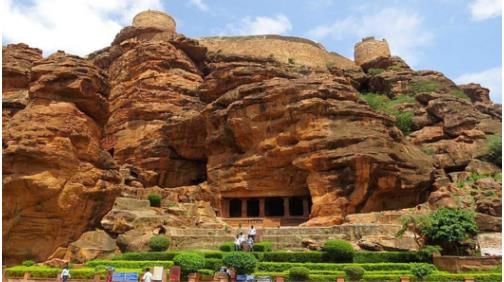Grade 6 Exam > Grade 6 Tests > Test: The Early Humans - 2 - Grade 6 MCQ
Test: The Early Humans - 2 - Grade 6 MCQ
Test Description
10 Questions MCQ Test - Test: The Early Humans - 2
Test: The Early Humans - 2 for Grade 6 2025 is part of Grade 6 preparation. The Test: The Early Humans - 2 questions and answers have been prepared
according to the Grade 6 exam syllabus.The Test: The Early Humans - 2 MCQs are made for Grade 6 2025 Exam.
Find important definitions, questions, notes, meanings, examples, exercises, MCQs and online tests for Test: The Early Humans - 2 below.
Solutions of Test: The Early Humans - 2 questions in English are available as part of our course for Grade 6 & Test: The Early Humans - 2 solutions in
Hindi for Grade 6 course.
Download more important topics, notes, lectures and mock test series for Grade 6 Exam by signing up for free. Attempt Test: The Early Humans - 2 | 10 questions in 10 minutes | Mock test for Grade 6 preparation | Free important questions MCQ to study for Grade 6 Exam | Download free PDF with solutions
Test: The Early Humans - 2 - Question 1
Analogy: Complete the analogy. Archaeologist : Excavation :: Historian : __________
Detailed Solution for Test: The Early Humans - 2 - Question 1
Test: The Early Humans - 2 - Question 2
Find the Intruder: Identify the concept that does not belong to the Mesolithic period.
Detailed Solution for Test: The Early Humans - 2 - Question 2
Test: The Early Humans - 2 - Question 3
Match the archaeological site with its characteristic feature.


Test: The Early Humans - 2 - Question 4
Odd One Out: Identify the term unrelated to the shift in climate around 12,000 years ago.
Detailed Solution for Test: The Early Humans - 2 - Question 4
Test: The Early Humans - 2 - Question 5
Fill in the Blank:
Domestication involves selecting plants and animals for desirable traits, leading to the ____________ of these species.
Detailed Solution for Test: The Early Humans - 2 - Question 5
Test: The Early Humans - 2 - Question 6
Analogy: Complete the analogy. Hunter-Gatherers : Nomadic :: Farmers and Herders : __________
Detailed Solution for Test: The Early Humans - 2 - Question 6
Detailed Solution for Test: The Early Humans - 2 - Question 8
Test: The Early Humans - 2 - Question 9
What major changes in the climate occurred around 12,000 years ago?
Detailed Solution for Test: The Early Humans - 2 - Question 9
Detailed Solution for Test: The Early Humans - 2 - Question 10
Information about Test: The Early Humans - 2 Page
In this test you can find the Exam questions for Test: The Early Humans - 2 solved & explained in the simplest way possible.
Besides giving Questions and answers for Test: The Early Humans - 2, EduRev gives you an ample number of Online tests for practice
Download as PDF




















